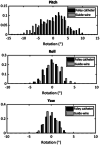The use of a thin guide-wire for urethral definition in prostate SBRT treatments with Cyberknife
- PMID: 37097754
- PMCID: PMC10402662
- DOI: 10.1002/acm2.14006
The use of a thin guide-wire for urethral definition in prostate SBRT treatments with Cyberknife
Abstract
Purpose: To study and analyze the effect of the use of a thin guide-wire instead of a Foley catheter for urethral definition in prostate stereotactic body radiation therapy (SBRT) treatments and to compare treatment parameters in both situations.
Material and methods: Thirty-seven prostate SBRT patients were employed in this study. A Foley catheter was employed in nine of them, and a guide-wire was employed in the other 28 patients. For each of the 28 patients in which the guide-wire was employed, a comparison between urethral positions in both situations was performed, allowing for a margin definition of the urethra when a Foley catheter was employed. Displacements of the prostate during treatment were obtained, allowing for an analysis of prostate positions in both situations. Also, different treatment parameters such as the number of treatment interruptions, couch movements performed, and x-rays needed were gathered.
Results: Large differences between urethral positions can be found in the anterior-posterior (AP) directions compared to those in the lateral (LAT) direction. Differences are also larger in areas closer to the base of the prostate, where margins applied in the case of using a Foley catheter are 16 mm with a mean displacement of 6 mm in the posterior direction. No differences in the treatment parameters were found during treatment in both situations. The difference found in absolute prostate pitch rotations suggests that the Foley catheter provokes a shift of the prostate position, which does not occur when employing the guide-wire.
Conclusions: Foley catheters shift the urethral position, making them a wrong surrogate of the urethra when no catheters are present. The margins needed to assess uncertainties introduced by the use of a Foley catheter are larger than those usually applied. The use of a Foley catheter did not present any additional difficulty during treatment delivery in terms of images employed or interruptions produced.
Keywords: Cyberknife; prostate SBRT; urethral contouring.
© 2023 The Authors. Journal of Applied Clinical Medical Physics published by Wiley Periodicals, LLC on behalf of The American Association of Physicists in Medicine.
Conflict of interest statement
The authors declare no conflicts of interest.
Figures




References
-
- Akimoto T, Ito K, ichi Saitoh J, et al. Acute genitourinary toxicity after high‐dose‐rate (HDR) brachytherapy combined with hypofractionated external‐beam radiation therapy for localized prostate cancer: correlation between the urethral dose in HDR brachytherapy and the severity of acute genitourinary toxicity. Int J Radiat Oncol. 2005;63(2):463‐471. doi:10.1016/j.ijrobp.2004.11.041 - DOI - PubMed
-
- Brand DH, Tree AC, Ostler P, et al. Intensity‐modulated fractionated radiotherapy versus stereotactic body radiotherapy for prostate cancer (PACE‐B): acute toxicity findings from an international, randomised, open‐label, phase 3, non‐inferiority trial. Lancet Oncol. 2019;20(11):1531‐1543. doi:10.1016/S1470-2045(19)30569-8 - DOI - PMC - PubMed
-
- Leeman JE, Chen YH, Catalano P, et al. Radiation dose to the intraprostatic urethra correlates strongly with urinary toxicity after prostate stereotactic body radiation therapy: a combined analysis of 23 prospective clinical trials. Int J Radiat Oncol. 2022;112(1):75‐82. doi:10.1016/j.ijrobp.2021.06.037 - DOI - PubMed
MeSH terms
LinkOut - more resources
Full Text Sources
Medical
Research Materials

